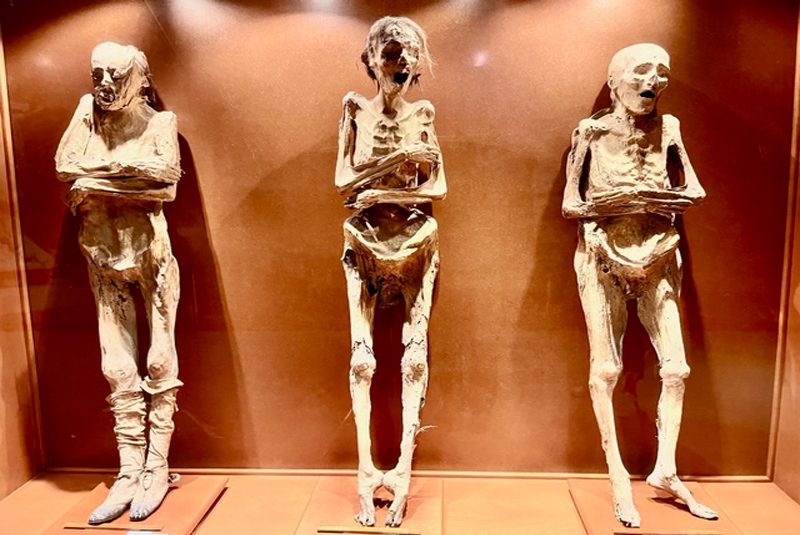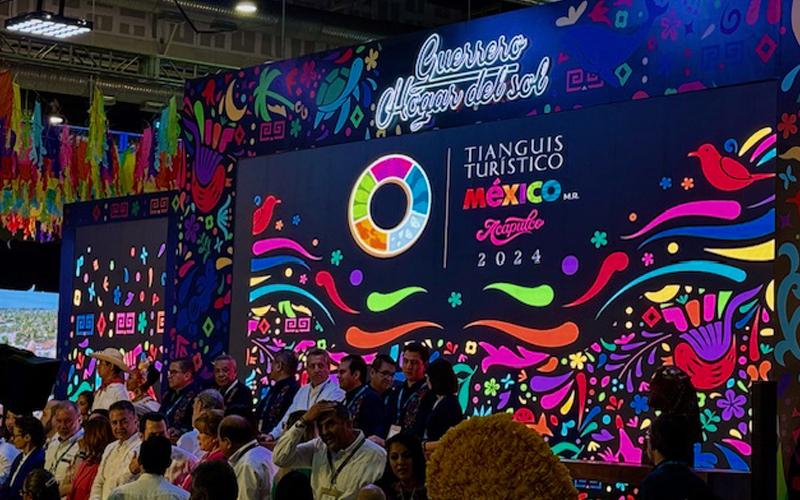It’s All About Mummies
Mummies are human bodies that go through an embalming process

that keep corpses from natural putrefaction after death. Their relationship with the dead and the world of spirits has always made people afraid of them. They are recurrent characters in horror stories. Mummification is part of the ritual of immortality in the afterlife.
Even though exquisitely preserved mummies’ primary association is with ancient Egypt, other cultures around the world also used this technique to protect the dead, including Mexico.
Museo de las Momias de Guanajuato, the Guanajuato Mummy Museum, touted as the world’s grandest assembly of natural mummies, amasses over 100 mummified bodies dating from 1860. The eerie spectacle of inherently mummified bodies entombed during a cholera outbreak in the colonial town of Guanajuato. In just a few weeks, the population decreased substantially.
Death was rampant, and corpses soared. The overwhelmed locals buried the dead as rapidly as possible to prevent the spread of the contagion. As more bodies piled up, it was not uncommon for multiple bodies buried in a single crypt.
In the 1860s, the local municipality imposed a tax on anyone who wanted to continue their relatives’ perpetual burial, many buried long before. The bodies were disinterred and stored in a warehouse if a relative could not pay. The local authorities exhumed the remains to free the grave for the now deceased. The Panteón Municipal de Santa Paula cemetery opened in 1861 adjacent to the current museum.
In 1865, Dr. Remijio Leroy, a French immigrant doctor with no family to pay the perpetual grave maintenance taxes, was the first to be dug up,” mentions Gabriel, a local guide and expert in the mummies of his city.
The mummified bodies, found accidentally, were well preserved due to Guanajuato’s mild year-round climate; 6,000 feet above sea level kept the bodies from decomposing.
Townspeople were shocked to see that the gruesome bodies were remarkably well-preserved. Soon after, tourists began to arrive, paying a few pesos to the local cemetery workers to allow them to see the mummies. In 1969, the neoclassical museum located south of Cerro Trozado in Guanajuto formally opened. Later, the provincial government renovated the museum placing the mummies behind temperature-controlled glass displays.
After their discovery, the mummies were placed in an ossuary, freeing up burial space. The site adjacent to Santa Paula Cemetery is now the home of the peculiar macabre museum. You’re roaming beneath the actual burial site as you walk the museum halls.
Today the Museum of the Mummies of Guanajuato has an exhibition space, which according to the museum’s website has 111 bodies of mummified women, men and children, 59 arranged behind glass that make up the Museum’s collection, all exhumed between 1865 and 1989. Among the curious corpses on display is what the museum claims are the smallest mummy in the world, a fetus buried next to his mother that died of cholera.
As the storied corpses became famous, star-studded on the silver screen, beginning in 1962, the telenovela Las Momias de Guanajuato, produced and directed by Ernesto Alonso, was broadcast. The soap opera is a series in which a story, presented between reality and fiction of the lives of people whose bodies mummified in Guanajuato.
The Mexican film “Santo Contra Las Momias of Guanajuato,” directed by Federico Curiel in 1972, is one of the most-watched films of its time. It includes Mexican wrestlers Blue Demon and Mil Máscaras. In the plot appears “Satan”, a 19th-century fighter who comes back to life and leads the army of mummies.
In 1979 German filmmaker Werner Herzog filmed a set of shots showing several of Guanajuato’s mummies for the German film Nosferatu, Vampire of the Night, to showcase a terrifying debut sequence.
In 2011, the producers of the animated films La Leyenda de la Nahuala and La Leyenda de la Llorona mentioned at the end of this last film that there would be a third animated film as part of the saga where the Guanajuato mummies participate. The film entitled The Legend of the Mummies of Guanajuato, released in October 2014.
Additional celebrated names who’ve visited the Guanajuato Mummy Museum include American author Ray Bradbury, who wrote a short story called “The Next in Line” based on his scary travel experiences at the museum.
Bradbury visited the museum in 1947 and departed disturbed and horror-struck. “I had nightmares about dying and having to remain in the halls of the dead with those propped up and wired bodies.”
One of the most curious aspects of mummies is their faces show natural fear. Their stories and legends would make anyone’s hair stand up. The terrified faces due to the fact that many of the corpses were buried alive is both spooky and uncanny.
The mummies look as if they are still asking for help. When you walk through the corridors viewing expressive looks on the faces, you feel strange energy running through your body. It’s something paranormal and explicable.
Is the museum appropriate for children? One perplexing fact during my visit was the number of parents with kids in tow, so I suppose that death, being an extension of life, is a life-changing lesson.
The city has embraced its “Creature Features” past. There is a mummy museum on site. The town goes even further, selling Guanajuato Mummy candy, different flavored candies in the shape of tiny mummies.
Aptly mentioned at the museum, “You are surrounded by death, here, honoring death gives meaning to one’s own life.” The screaming Guanajuato mummies whose faces remain frozen in terror as if asking for help are creepy, scary, and moving at the same time, a must-visit on a trip to historical Guanajuato.




